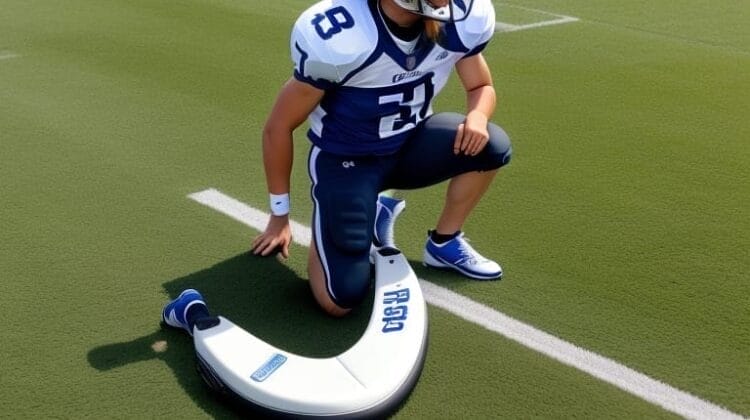
Technology in Sports
Technology has become an integral part of our lives, constantly shaping and revolutionizing various industries. One such field that has significantly embraced technology is sports. From enhancing athlete performance to providing a more immersive viewing experience for spectators, technology has undoubtedly changed the landscape of sports. In this article, we will delve into the various advancements in technology that have transformed the world of sports and how they have impacted the way we play, watch, and analyze our favorite games.
From wearable devices to virtual reality simulations, we will explore the innovative solutions that have revolutionized training, performance analysis, and fan engagement. With the increasing integration of technology in sports, the boundaries of what is considered possible continue to be pushed, leading to a more dynamic and competitive sporting environment. Join us as we delve into the fascinating world of technology in sports and how it is shaping the future of the games we love.
Enhancing athlete performance with technology
The integration of technology in sports has revolutionized the way athletes train and compete, leading to significant advancements in performance enhancement. With the help of cutting-edge tech and sports-specific tools, athletes can now access real-time data and analytics that provide valuable insights into their performance. For example, wearable devices such as smartwatches and fitness trackers can monitor heart rate, sleep patterns, and calorie expenditure, allowing athletes to optimize their training and recovery regimes.
Additionally, motion capture technology and virtual reality simulations enable athletes to analyze their technique and make necessary adjustments to improve their skills. Furthermore, the use of performance tracking systems and video analysis software allows coaches and trainers to provide personalized feedback and develop tailored training programs. By leveraging technology in sports, athletes can unleash their full potential and attain new levels of performance excellence.
Impact of tech on sports training
The impact of technology on sports training has been profound, revolutionizing the way athletes prepare for competitions. Through the integration of cutting-edge tech and sports-specific tools, athletes now have access to a wide range of innovative training methods and resources. For instance, wearable devices like smartwatches and fitness trackers provide real-time data on vital signs, sleep patterns, and calorie expenditure, enabling athletes to monitor their progress and make informed decisions about their training regimens.
Furthermore, motion capture technology and virtual reality simulations allow athletes to analyze and refine their technique, leading to improved performance. Coaches and trainers also benefit from technology, utilizing performance tracking systems and video analysis software to provide personalized feedback and design tailored training programs. The synergy between technology and sports has opened up new possibilities for athletes to enhance their skills and reach new heights of achievement.
Revolutionary advancements in sports tech
Technology in Sports has witnessed revolutionary advancements in recent years, transforming the way athletes compete and fans engage with their favorite sports. One remarkable advancement is the use of artificial intelligence (AI) in sports analytics. AI algorithms can analyze vast amounts of data, from player statistics to game footage, providing valuable insights into performance and strategy. This information enables teams to make data-driven decisions, optimize gameplay, and gain a competitive edge.
Additionally, the integration of advanced sensors and biomechanical analysis has revolutionized injury prevention and rehabilitation. Wearable devices and motion sensors can track an athlete’s movements, detect potential imbalances or risks of injury, and provide personalized training programs to improve performance and reduce the chances of injuries. These advancements in sports tech have not only enhanced the performance of athletes but also elevated the overall spectator experience, through innovations like augmented reality (AR) and virtual reality (VR) in sports broadcasting.
Fans can now immerse themselves in the game, experiencing it from unique perspectives and gaining a deeper understanding of player movements and strategies. With technology continuing to evolve, the future of sports holds even more exciting possibilities, pushing the boundaries of human capabilities and captivating audiences worldwide.
Improving safety and injury prevention
In the realm of technology in sports, there has been a significant focus on improving safety and injury prevention. Various technological advancements have been instrumental in minimizing the risks associated with athletic activities. For instance, the development of impact sensors and smart helmets has revolutionized concussion management. These devices can detect and measure the force of impacts, providing real-time data to coaches and medical staff, allowing for timely intervention and precautionary measures.
Additionally, advancements in sports engineering have led to the creation of more advanced and protective equipment, such as lightweight yet durable helmets for football players or high-performance padding for extreme sports athletes. Furthermore, the integration of virtual reality (VR) and augmented reality (AR) technologies has allowed for immersive training experiences that simulate game-like situations without the risk of physical harm. These innovative technologies not only prioritize the well-being of athletes but also contribute to the overall advancement and sustainability of sports.
Data analysis for game strategy
Data analysis plays a crucial role in enhancing game strategy in the realm of technology in sports. By analyzing data collected during practices, games, and even from wearable devices, coaches and athletes can gain valuable insights that can inform and optimize their gameplay. Through the use of advanced statistical models and algorithms, data analysis can identify patterns, tendencies, and strengths and weaknesses of both individual players and teams. This information can be used to develop tailored strategies, make informed game-time decisions, and even predict the outcomes of certain plays or games.
Additionally, data analysis can help in player development by identifying areas of improvement and providing targeted training programs. Ultimately, the integration of data analysis into game strategy empowers athletes and coaches to make data-driven decisions and gain a competitive edge in the ever-evolving world of sports.
Enhancing referee decisions with tech
In the fast-paced and high-stakes world of sports, the accuracy of referee decisions can significantly impact the outcome of a game. That’s where technology in sports comes into play. By incorporating tech innovations into officiating, such as video replay systems, VAR (Video Assistant Referee), or goal-line technology, referee decisions can be enhanced to ensure fairness and minimize human error.
These tech solutions provide a second set of eyes, allowing referees to review critical moments or controversial calls and make more informed and objective judgments. This not only increases the accuracy of decisions but also contributes to a sense of transparency and accountability in the sports industry. As technology continues to advance, we can expect further advancements in enhancing referee decisions, ultimately raising the overall integrity and fairness of the game.
Wearable tech for fitness tracking
Wearable tech has revolutionized the way athletes and fitness enthusiasts track their performance and monitor their health. With the advancement of technology in sports, athletes now have access to a wide range of wearable devices designed specifically for fitness tracking. These devices, ranging from smartwatches to fitness bands, offer features such as heart rate monitoring, step counting, sleep tracking, and GPS tracking. By wearing these devices during workouts or training sessions, athletes can gather valuable data on their performance, allowing them to analyze their progress, set goals, and make informed decisions about their training regimen.
Furthermore, wearable tech for fitness tracking has also enabled coaches and trainers to closely monitor their athletes’ progress remotely, providing personalized feedback and making adjustments as necessary. With the continuous evolution of technology in sports, we can expect wearable tech for fitness tracking to become even more sophisticated, enabling athletes to optimize their training and reach new levels of performance.
The future of tech in sports
As technology continues to advance, we can expect to see even more exciting developments in the intersection of tech and sports. One area that holds tremendous potential is virtual and augmented reality (VR/AR). By incorporating VR/AR technology into sports training, athletes will be able to simulate real game scenarios, improving their decision-making skills and enhancing their overall performance.
Additionally, advancements in biomechanical analysis will enable coaches and trainers to gather detailed data on an athlete’s movements, allowing for precise adjustments and optimizations. Moreover, the integration of artificial intelligence (AI) will revolutionize sports analytics, providing teams with valuable insights and predictive models to enhance gameplay strategies. From advanced sports equipment to real-time data analysis, the future of technology in sports promises to elevate the performance, training, and overall experience for athletes and fans alike.
In conclusion, technology has greatly impacted the world of sports, from enhancing athlete performance to improving fan experience. As technology continues to advance, we can only expect to see more innovations and advancements in the sports industry. While there may be some concerns about the role of technology in sports, it is clear that it has brought numerous benefits and will continue to play a significant role in shaping the future of athletics. With the help of technology, we can create a more engaging and immersive experience for both athletes and fans alike, making sports even more exciting and enjoyable for everyone involved.
FAQ
How has technology changed the way sports are played and watched in recent years?
Technology has revolutionized sports in recent years by introducing advanced analytics, virtual reality training, wearable sensors for performance tracking, instant replay reviews, and enhanced viewing experiences through high-definition broadcasts and streaming platforms. These innovations have improved player training, injury prevention, and fan engagement, ultimately shaping the way sports are played and watched.
What impact has the use of video replay technology had on officiating and the outcome of games in various sports?
The use of video replay technology has significantly impacted officiating in sports by providing a more accurate and fair decision-making process. It has helped in correcting errors, resolving close calls, and ensuring the right calls are made. While it has increased the accuracy of officiating, it has also led to longer game times and potential disruptions in the flow of the game. Overall, video replay technology has had a positive influence on the outcome of games by minimizing human error and enhancing the integrity of sports competitions.
How are wearable technologies, such as fitness trackers and smart clothing, being used to improve athlete performance and prevent injuries?
Wearable technologies like fitness trackers and smart clothing are enhancing athlete performance by providing real-time data on metrics like heart rate, steps taken, and calories burned. These insights help athletes optimize their training routines and track progress more accurately. Additionally, smart clothing with biometric sensors can detect muscle fatigue and potential injury risks, allowing athletes to modify their workouts or rest as needed to prevent injuries. Overall, these wearable technologies play a crucial role in improving athlete performance and minimizing the risk of injuries through data-driven insights and early detection mechanisms.
What role do virtual reality and augmented reality play in training and enhancing the fan experience in sports?
Virtual reality and augmented reality are revolutionizing sports training by providing immersive and interactive experiences for athletes to simulate game scenarios and enhance their skills. In terms of fan experience, these technologies offer new ways for fans to engage with their favorite teams and players, such as virtual tours of stadiums, live game simulations, and interactive experiences during matches. This immersive and personalized approach enhances the overall fan experience, making it more interactive, engaging, and memorable. Overall, virtual reality and augmented reality are transforming both sports training and the fan experience in innovative and exciting ways.
How have advancements in sports analytics and data collection technologies revolutionized the way teams evaluate player performance and make strategic decisions?
Advancements in sports analytics and data collection technologies have revolutionized how teams evaluate player performance and make strategic decisions by providing in-depth insights into player statistics, game trends, and opponent analysis. These technologies allow teams to track player movements, assess their strengths and weaknesses, optimize game strategies, and make informed decisions based on data-driven analysis. This has led to more objective decision-making, improved player performance, and a better understanding of the game, ultimately enhancing the overall competitiveness and success of sports teams across different disciplines.
